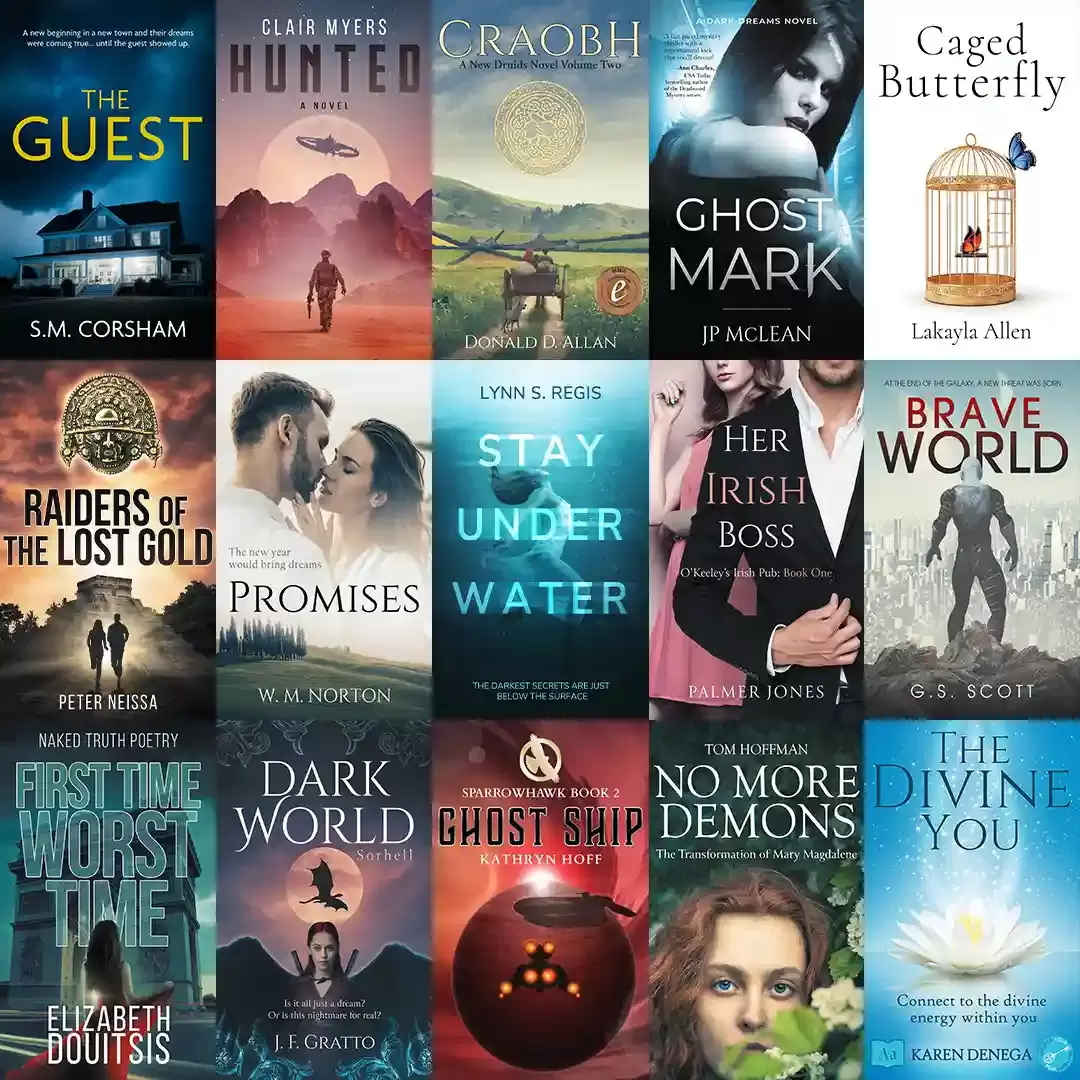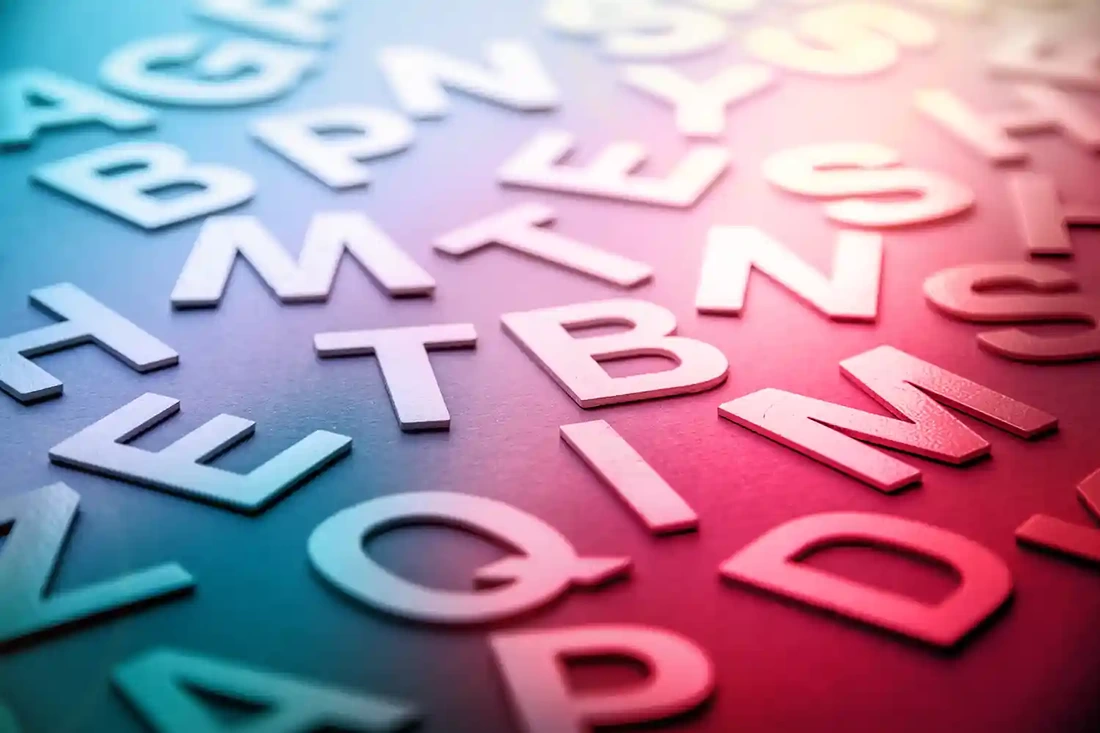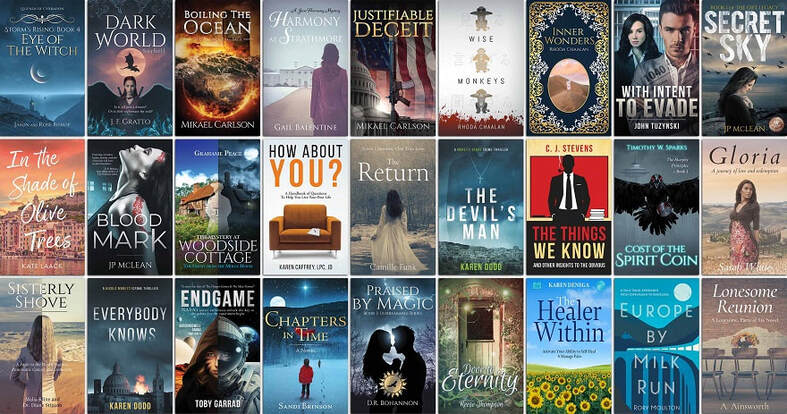|
They say that you should never judge a book by its cover, but in the world of publishing, that old adage couldn't be further from the truth. Book covers play a pivotal role in the success of a book, and their influence on book sales is undeniable, In this blog post, we look at just how significant the impact of book covers can be on the sales of your publication.
The Power of First Impressions Imagine walking into a bookstore or scrolling through an online catalog of books, what's the first thing that catches your eye? It's the cover, of course, whether it's the vibrant colors, intriguing imagery, or elegant typography, a well-designed book cover can captivate potential readers within seconds. And it’s this initial impression that can make or break a sale.
0 Comments
When it comes to book marketing, the back cover of your book is often underestimated as a powerful tool. It serves as a window into the world you've created, enticing readers to pick the book off of the shelf and open the book to find out more.
A well-crafted back cover can make the difference between a potential reader glancing over your book and them eagerly purchasing it, in this guide, we'll explore the essential elements that need to grace the back cover of your book. Choosing the right colors for your book cover designIn the world of book cover design, color is a powerful tool that can instantly captivate a reader's attention and convey the essence of a story. The careful selection and harmonious use of colors can evoke emotions, set the tone, and leave a lasting impression. In this blog post, we delve into the realm of color theory and its application in creating captivating and meaningful book covers.
Understanding Color Theory Color theory is the study of how colors interact with one another and how they affect our emotions and perceptions. It consists of three primary components: the color wheel, color harmony, and color psychology. KDP are one of the biggest print on demand services currently available to self-publishing authors, as part of Amazon they have access to a truly massive market place, and have made the process getting your book published incredibly easy (without any upfront fees either), these are big reasons why so many authors use them to publish with.
So, when it comes to designing a book cover for your paperback with KDP, what should you be aware of and how easy is it? Well, there are two aspects to take into consideration, the first is the technical side of your book cover and the second is the creative part. Both are important and both we’ll cover in this article. First, let’s look at the creative aspect of your book cover design. The Power of Typography: The Importance of Selecting the Best Fonts for a Book Cover Design8/4/2023 When it comes to designing a book cover, every element plays a crucial role in capturing the reader's attention and conveying the essence of the story within. Among these elements, typography stands as a powerful tool, shaping the first impression a potential reader will have of the book. Selecting the right fonts can significantly impact the overall appeal, readability, and marketability of a book cover. In this article, we explore the importance of choosing the best fonts for a book cover design and how they can elevate a book's visual identity.
Instant Connection: Fonts have the ability to evoke emotions and establish an instant connection with the reader. The right choice of font can set the tone of the book, whether it's whimsical, mysterious, thrilling, or romantic. The typography alone can provide visual cues about the genre and themes of the book, attracting the target audience and making them feel compelled to explore further. We all know that a book will be judged by its cover, and as a major part of its advertising, it's so important that you get this right from the start.
Here are six reasons why your cover should look great: ONE- Professionalism: A well-designed book cover adds a level of professionalism to your work. It signals to potential readers that your book is worth their attention and investment of both money and time reading it, a professionally designed cover can help your book stand out in a crowded market and attract the right audience. When you create book cover designs for self-publishing authors, you get to work with a lot of very creative people, which is always an enjoyable experience, taking the synopsis for their book and developing a cover design which is something that we love to be involved with.
Over time we have created countless book covers for all genres and for print on demand services such as KDP Publishing, IngramSpark, Lulu and many others (both big and small). When creating a cover there are things that we look for, in the design, layout and requirements of both the project and the required format (whether that’s in print as a paperback or hardback, or as just an eBook cover design). You’ll also find that the print on demand service being used will also have different specifications for the book too. So, here are some of our favorite book covers with a little detail on what went into the design and where you can find the book too. If you’re publishing a book with a print on demand service, then you may well have decided to use Amazon KDP (formerly Createspace) for your new title, after all, being a part of Amazon, they have one of the biggest platforms in the world for online retail and offer a great free to use service for authors.
Using their platform for self-publishing is fairly straightforward and we have written lots of articles showing you how to upload books, tweak your KDP account and even promote your book on Amazon with their own advertising options for authors & sellers. But an important part of your publishing journey with Amazon KDP will be your book cover design. The first thing to remember is that you will likely publish your book as both an eBook and in print, the eBook will be sold via Kindle and the cover has to be created to certain specifics to work with their book readers, whereas the book cover design for print will need to be created specifically for your paperback and/or hardback (taking in to account the spine width based on the page count) and a different set of specifics. We all understand that a great book cover design is essential when it comes to catching the eye of your potential reader, ensuring that your book stands out upon the page, looks professional and is readable as a thumbnail.
But what do you need to consider when creating an eBook cover? The first thing that you’ll need to look at will be the actual dimensions of the eBook, because when it comes to publishers, they do require different sizes for the eBook cover. We have all heard the old saying not to judge a book by its cover, meaning not to take things at face value, and try to look a little deeper, the only trouble with this is that we’re subconsciously predisposed to make quick decisions based on how something looks. This is something that we have kept within our subconscious minds for millennia, and as such, we all make assumptions about a person or product based on looks all the time.
From this, the world of advertising has developed and pushed boundaries to ensure that what you look at when you walk into a store has the best chance of grabbing your attention, this goes for the online stores too. Now, you may say ‘well advertising doesn’t work on me’ and if that truly is the case, that’s great, however, it does work on lots of other people, and if you want to give your book the best chance of being considered by a potential reader, then you should think about the design you choose for your book. |
JD&JCategories
All
Archives
July 2024
All information within this website (including its blog) is published in good faith and for general information purposes only. JD&J Design LLC does not make any warranties about the reliability and accuracy of this information. Any action you take upon the information in this website is strictly at your own risk. JD&J Design LLC is not liable for any losses and/or damages in connection with the use of this site and information.
|













